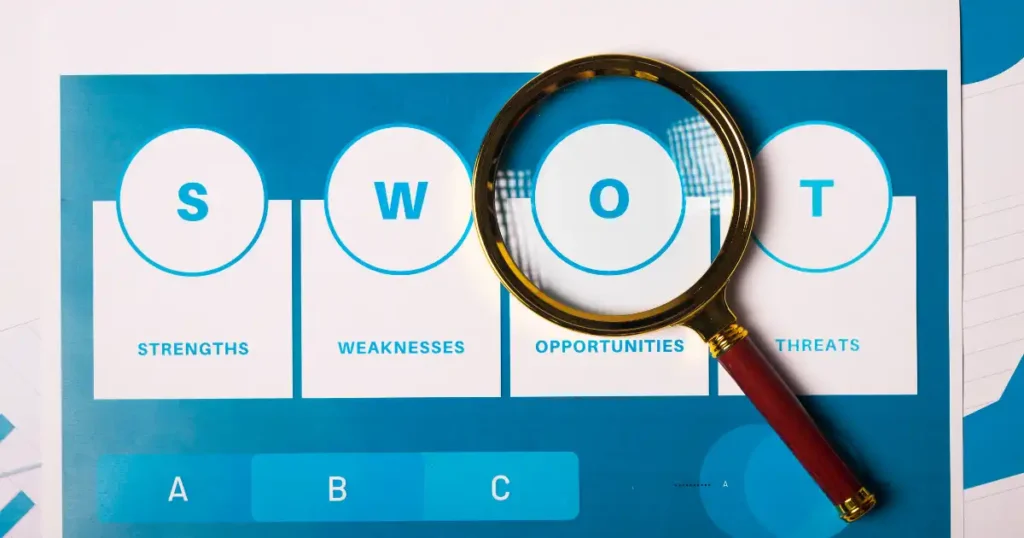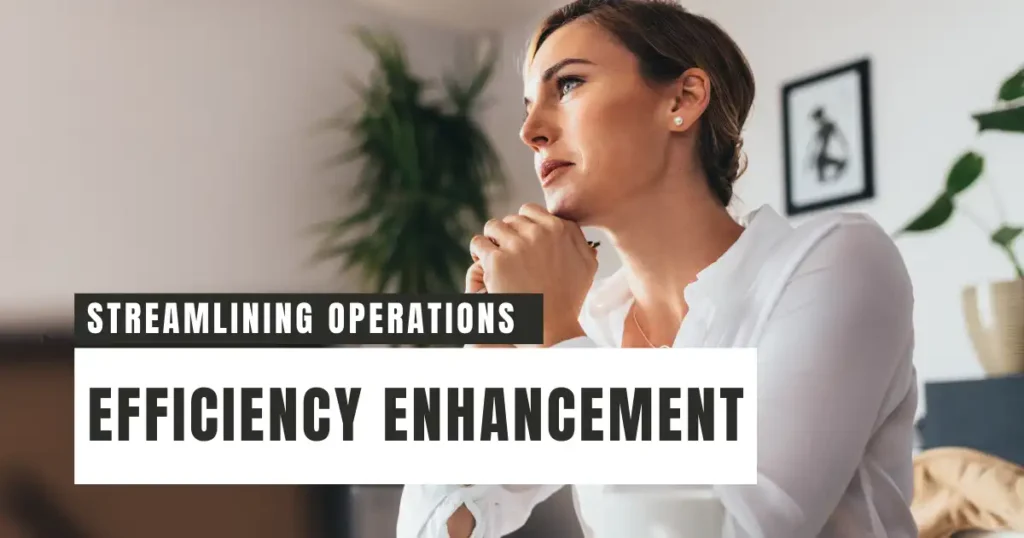Table of Contents
Business improvement is a diverse but highly effective approach deployed by organizations of all sizes and in all industries. Its continuous stated aim is to move something within an organization from one state to another. It is about moving something from a negative, underperforming or uncapable state to one of clarity, improvement and successful delivery. This can be a process, a policy or procedure. It can be a team, department or function. It can be a technology, a system or a software which needs to deliver better outputs faster.
The motivations behind business improvement can vary. You could pursue business improvement to save money, time and effort. To reduce costs, errors or issues. To improve performance, quality or outputs. The motivations and desired outcomes really are endless, but you will often focus on one area when deploying a business improvement initiative.
In this article, we will explore the options open to you when it comes to business improvement, and the plan you can follow in order to delivery successful business improvement initiatives. There are a lot of steps and activities involved, and the plan provided is exhaustive. This plan approach is not about asking you to conduct all of the activities, but giving you the outline for what options are on the table for you, options you can ultimately tailor and amend to take forward.
The Plan

Let’s introduce the plan at a high level, and then we will dive into each individual section in more detail after. To deliver effect business improvement, there is an 8 stage process one will often follow. This approach is often chosen because:
- It is tried and tested.
- It covers off all potential areas including process improvement and root cause analysis.
- It takes you from pre to post project phases.
The 8 stages of the Business Improvement Plan are as follow:
- Define
- Plan
- Map
- Analysis
- Improvement
- Preparation
- Deployment
- Control
It is highly recommended you complete all 8 stages when it comes to deploying business improvement, but as you’ll see, there are a number of activities to conduct for each stage. You do not need to conduct all activities, for all stages each time you conduct a business improvement exercise. Which ones you end up needing to use will become clear as you define what your problem is and the stated outcomes of your work, before ultimately removing those activities not required.
We are going to take a multifaceted approach to this initiative. It will include:
- Business improvement
- Process improvement
- Continuous improvement
- Culture change
- Root cause analysis
- Voice of the customer
We will take a 8 stage approach to ensure we collect all of the right information, at the right time and can utilise it in a way that benefits the initiative perfectly. This approach will also mean that everyone is aware of the work that is coming, and when. This approach will also ensure all problems and processes identified are in scope and no stone is left unturned. This will give us full confidence.
The Delivery Approach

1. Define
We will use this time to define the current situation. This will involve:
- Analysing current datasets to understand any trends in the problems faced.
- Interviewing team members to understand their perspective and experiences.
- Interviewing end users of the processes and services in scope for this work to understand their experiences.
We will leave this stage crystal clear on the problems, the experiences and the processes in scope.
The items below can be used as a checklist of items to work through as part of this initiative. They can also be added to your initiative plan by your Initiative Manager to work through throughout your initiative with timelines and deliverables assigned to them.
- Define what data is needed
- Reach out to those who can provide said data
- Collect relevant data required
- Analyse the data collected
- Baseline the data collected
- Identify trends in the data analysed
- Present back the findings
- Define the scope of the initiative
- Identify key stakeholders within the team
- Identify key stakeholders impacted
- Interview all stakeholders
- Redefine scope if new information emerges
- Pull together a VOC survey for end users
- Send out the VOC survey with 2 week deadline
- Interview and meet with end users of service
- Analyse survey results
- Analyse feedback results and combine the two
- Redefine scope if new information emerges
- Build out your Initiative Charter
At the end of this stage, the key deliverables will be:
- Voice of the customer analysis.
- Well defined scope.
- An Initiative Charter.
2. Plan
We will use this time to plan out what needs to be done in this initiative. This will involve:
- Identify any additional activities that need to be completed outside of this list.
- Plotting all activities in a initiative plan.
- Assigning the tasks to owners, scheduling the timeframe and scheduling updates.
We will leave this stage with a clear plan of what needs to be done, when and by whom.
- Identify the needs of the team
- Speak with key stakeholders & teams
- Identify who will join the initiative team
- Review this list of activities to complete
- Identify any gaps, based on work done so far
- Transfer all activities over to a initiative plan
- List out the activities in the order to be done
- Add timeframes to each activity
- Assign each task an owner
- When complete, communicate the plan out
- Schedule the relevant update meetings
- Build and schedule the status update
At the end of this stage, the key deliverables will be:
- The final initiative team.
- A complete initiative plan.
- Update meetings scheduled.
3. Map
We will use this time map out the current problems the team are facing. This will involve:
- Mapping the current state processes via process mapping workshops.
- Identifying on the maps where the problems are occurring.
- Making the data we have graphical and visual.
We will leave this stage with a clear visual on all in scope processes, problems and data.
- List out all of the processes in scope
- Identify who needs to attend which workshop
- Schedule the workshops
- In the invites, detail the agenda of the workshops
- Run the process mapping workshops
- Map out: workflow, activities, all hand offs. who is involved, which systems are involved.
- Run through the processes to check.
- Discuss / bring up problems identified before.
- Plot on the maps where these are occurring.
- Plot the extent of the problem.
- Use data to plot further information: customer complaints, delays to the process.
- Ensure the maps are colour coded
- Conduct process analysis
- Identify rework loops or bottlenecks
- Highlight risks
- Highlight opportunities for improvement
- Close workshops
- Tidy up maps and send out for review
- Finalise maps
At the end of this stage, the key deliverables will be:
- Fully detailed, end to end process maps.
- A visual representation of the problem faced.
- A visual representation of all key data mapped.
4. Analysis
We will use this time to understand why the problems are occurring. This will involve:
- Root cause analysis workshops to understand the why behind the problems.
- Understand the potential causes and land on the actual causes.
- Improvement workshops to identify waste within the processes.
- Gap analysis of current state processes compared with potential future state processes.
We will leave this stage knowing exactly why the problems have been occurring, armed with a list of causes and knowledge of what waste exists, where and the potential to remove it.
- Review data and conversations had so far
- List out all problems and issues identified
- Pareto Chart the issues
- IF many issues to address, prioritise,
- IF not many issues to address, include all
- Identify who needs to be in future workshops
- Schedule root cause analysis workshops
- In the invites, detail the agenda of the workshops
- Run the RCA workshops
- In the workshops: root cause key problems identified, the causes of the causes, use effective root cause tools.
- Use tools to identify potential causes
- Use tools to land on actual causes
- Close workshops
At the end of this stage, the key deliverables will be:
- All problems root caused.
- Actual causes identified.
5. Improvement
We will use this time to identify the solutions and changes needed. This will involve:
- A workshop to identify all potential improvements to address waste and productivity.
- A workshop to identify all potential solutions to be deployed to address problems.
- Work through the maps to transfer potential to actual that will be deployed.
We will leave this stage knowing exactly the changes and improvements to be delivered and which ones have been parked for now.
- Identify who needs to be in future workshops
- Schedule improvement workshops
- In the invites, detail the agenda of the workshops
- Run the improvement workshops
- In the workshops: Identify all waste within the process, all opportunities and the improvements you want.
- Identify who needs to be in future workshops
- Schedule solutions workshops
- In the invites, detail the agenda of the workshops
- Run the solutions workshops
- In the workshops: Identify all potential solutions and plot these within the processes.
- Schedule mapping workshops
- In the invites, detail the agenda of the workshops
- Run the mapping workshops
- In the workshops: Use maps, map future state, add improvements and solutions in and conduct a gap analysis.
- Close workshops
- Take maps away to amend and finalise
- Send maps out for review
- Complete a costing of solution plan
At the end of this stage, the key deliverables will be:
- All improvements and solutions identified and mapped.
- Future state process maps completed.
- Completed costing of solution plan.
6. Preparation
We will use this time to get the processes and teams ready for go LIVE. This will involve:
- Test the improvements and solutions using dummy data and scenarios.
- Pilot testing the changes using a small sample size.
- Plan for the full go LIVE of the changes, including an implementation plan.
We will leave this stage with full confidence that the changes and improvements are the correct ones and will land well on day 1 of go LIVE.
- Build a testing plan
- Gather and set up the dummy data and processes
- Set up the test scenarios
- Run the test scenarios
- Analyse the results of the test scenarios
- Repeat the testing as many times as needed
- Schedule the pilot test
- Choose the small sample to test
- Identify who will be involved in this testing
- Communicate out what this will entail
- Run the pilot testing
- Review the results of the pilot testing
- Repeat the test as many times as needed
- Fix any issues identified
- Close the testing
- Update future state process maps to NEW and add in any changes made.
- Build the implementation plan
- Communicate out the implementation plan
- Schedule any meetings, sessions required
At the end of this stage, the key deliverables will be:
- Testing and piloting results document.
- An implementation plan.
- All new process maps.
7. Deployment
We will use this time to deploy the solutions and changes needed. This stage may take some time, depending on the types of improvement. This will involve:
- Deploying the changes as per the implementation plan built in stage 6.
- Ensuring Change Management in check.
- Communicating out the changes to all.
We will leave this stage with all improvements and changes deployed and the new situation LIVE.
- Activate the implementation plan.
- Deploy all activities as per that plan.
- Communicate out that the work is happening.
- Monitor the performance throughout delivery: Keep an eye on data and feedback.
- Ensure all change is managed efficiently.
- Build out communications to send throughout.
- Send out comms before, during and after.
- Ensure new process maps are readily available.
- Formally close the implementation stage.
At the end of this stage, the key deliverables will be:
- New processes / changes LIVE.
- All teams and departments well informed.
8. Control
We will use this time to ensure the changes deployed will last. This will involve:
- Adding the right controls into the amended processes (if not already done).
- Set up the tracking / control charts to analyse long term performance data.
- Compare the performance of the new processes with original baseline data.
- Communicate out benefits realisation.
We will leave this stage with the business improvement initiative now completed and closed with full confidence the changes we have made will last the test of time.
Please note, some of the work around building in controls to the processes would have already been done. If so, you can pass over those steps.
- Identify where controls may be required.
- Build out a control plan.
- Work to add these controls in.
- IF controls already in place, assess the need to tighten these.
- If required, tighten said controls.
- IF not already done, set up: Control tracking, process performance tracking and control charts.
- Compare baseline data with new data.
- Conduct a lessons learned exercise.
- Send out the benefits realisation piece which Includes benefits of initiative, outcomes of all work done and the baseline vs. new performance data.
- Formally close the initiative by thanking the team involved, ensuring all documentation is updated and highlighting outstanding recommendations.
At the end of this stage, the key deliverables will be:
- A control plan.
- Lessons learned pack.
- Benefits realisation piece.
Conclusion
As is evident from what you have just read, the compiling of an effective business process improvement plan is not an easy feat. Indeed, there are many facets, avenues and dimensions to a plan that will ultimately straddle a number of departments, products, people, policies, technologies and outputs.
With that said, what has been presented to you has been done so in a way for you to tailor it to your specific individual organizational needs. For each stage, you need to be clear on the activities you are taking forward, the deliverables you want to see at the end of each of these stages and the documentation you plan to create (project plan, charter, comms plan etc.) to take your initiative forward.
If you follow the activities and the stages as set out in this article, you will vastly increase your chance of delivering a very successful and robust business improvement initiative.







